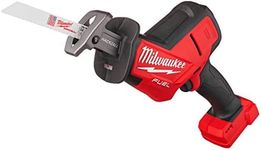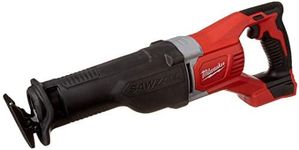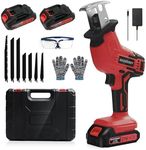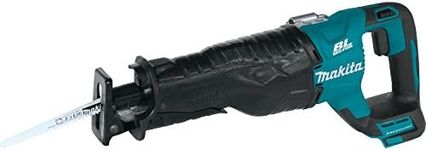Buying Guide for the Best Cordless Sawzalls
Choosing the right cordless Sawzall (reciprocating saw) can make a significant difference in your DIY projects or professional work. These tools are versatile and can cut through a variety of materials, including wood, metal, and plastic. When selecting a cordless Sawzall, it's important to consider several key specifications to ensure you get the best fit for your needs. Understanding these specs will help you make an informed decision and choose a tool that will perform well for your specific tasks.Battery VoltageBattery voltage determines the power of the Sawzall. Higher voltage means more power, which is essential for heavy-duty tasks. Common voltages range from 12V to 60V. For light to medium tasks, a 12V to 18V Sawzall is usually sufficient. For more demanding jobs, such as cutting through thick metal or hardwood, a 20V or higher model is recommended. Consider the type of work you'll be doing most often to choose the right voltage.
Battery Capacity (Ah)Battery capacity, measured in ampere-hours (Ah), indicates how long the battery will last on a single charge. Higher Ah means longer runtime. Typical capacities range from 1.5Ah to 9Ah. For occasional use or short tasks, a lower capacity battery (1.5Ah to 3Ah) may be adequate. For extended use or professional work, a higher capacity battery (4Ah to 9Ah) will be more beneficial. Think about how long you need the tool to run without recharging to determine the right capacity.
Stroke LengthStroke length refers to how far the blade moves back and forth with each stroke. Longer stroke lengths (1 inch to 1.5 inches) allow for faster cutting, especially in thicker materials. Shorter stroke lengths (less than 1 inch) provide more control and precision, which is useful for detailed work. If you need to make quick, rough cuts, opt for a longer stroke length. For more precise cuts, a shorter stroke length is preferable.
Strokes Per Minute (SPM)Strokes per minute (SPM) measures how many times the blade moves back and forth in one minute. Higher SPM means faster cutting speed. Typical ranges are from 2,500 to 3,000 SPM. For general-purpose use, a Sawzall with around 2,500 SPM is usually sufficient. For faster cutting in tougher materials, look for models with higher SPM. Consider the speed you need for your projects to choose the right SPM.
WeightThe weight of the Sawzall affects how easy it is to handle and use for extended periods. Lighter models (around 5 to 7 pounds) are easier to maneuver and cause less fatigue, making them suitable for overhead or prolonged use. Heavier models (8 pounds and up) may offer more stability and power but can be tiring to use for long periods. Think about the type of work you'll be doing and how long you'll be using the tool to decide on the right weight.
Blade Change MechanismThe blade change mechanism determines how easy it is to swap out blades. Tool-free blade change systems allow you to change blades quickly and easily without needing additional tools, which is convenient for frequent blade changes. Traditional systems may require a wrench or other tools to change the blade. If you anticipate changing blades often, a tool-free system will save you time and hassle.
Variable Speed ControlVariable speed control allows you to adjust the cutting speed to match the material and task. This feature provides greater versatility and precision. Some models have a dial or trigger to control speed, while others may have preset speed settings. If you work with a variety of materials and need precise control, look for a Sawzall with variable speed control. For simpler tasks, a single-speed model may suffice.






















